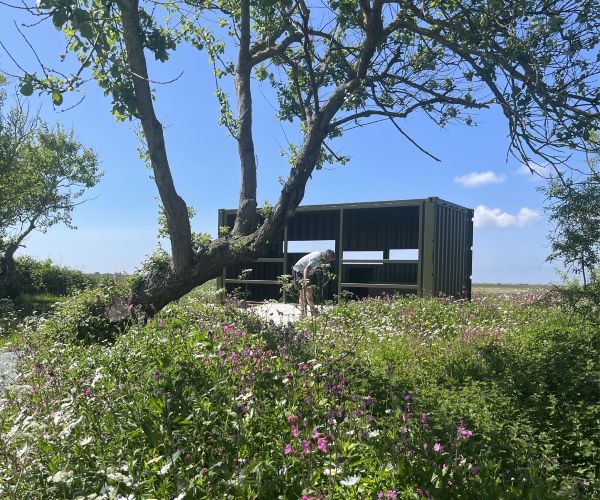- Lawn Turf
- Artificial
- Soil
- Timber
- Composite Decking
- Paving & Stone
Get In Touch With Our Experts Today!
Give us a Call! - Seed & Fertiliser
- Dressing
- Bark

October 24, 2024
With wild flower turf patches popping up in parks, playgrounds and public places, we get why you would want their pretty floral display in your own backyard! But how can you achieve the same beautiful bloom?
Laying wild flower turf isn’t too dissimilar to other natural turfs, and we ask all the same questions: When should I lay wild flower turf? How do I lay turf, and how do I maintain my wild flower lawn? Well, we’ve covered all those questions and answers below.
The best time to lay wild flower turf is Autumn, between August and October. During this season, turf focuses on deepening and strengthening its roots rather than getting plants to flower. By establishing a good root system, your turf has a better chance of surviving and thriving when Spring comes around.
If you miss your window in Autumn, not to worry; this turf can also be installed in Spring (March to June). This is a good time as flowers are actively growing, but weather conditions in Spring can be unpredictable, so you’ll have to keep an eye on how your turf is settling in.
Wild flower turf is a low-maintenance, self-seeding turf. With a mix of flower seeds, often suited to local conditions, it provides a gorgeous selection of multi-coloured flowers and grasses. Not only does this add texture and colour to your outdoor space, but it’s also an eco-friendly turf – encouraging biodiversity, providing habitats for small creatures, and supporting pollinators such as bees.
We love that you’re incorporating wild flowers into your landscaping; you won’t regret it! But there are a few factors to consider to make sure your wild flower has the best chance.
We strongly recommend removing any existing turf before laying your lovely new wild flower turf. If you lay turf on top of turf, the original turf will be smothered, and your new turf will struggle to root and access essential nutrients. So, no, you shouldn’t lay turf over turf.
Ok, you’ve figured out where you’re laying your wild flower turf and used our handy turf calculator to figure out how many rolls of turf you’ll need – great! Now’s the time to prep the area ready to lay your wild flower turf in five easy steps.
As we said, you can’t lay turf over turf. Start by digging up any existing turf and weed the area by hand or with a chemical-free weed killer.
2. Check your soil’s nutrient levels
Usually, with turf, you would add a layer of highly nutritious topsoil. However, this turf will not appreciate that! If your soil is already in good condition and highly fertile, you need to reduce its fertility. This might sound counter-productive, but it loves poorer soil. By adding poor-quality soil before laying your turf, your wild flowers will be much happier.
3. Dig over and level out the soil’s surface
Dig over a few centimetres of top-layer soil, removing any weeds or stones. Then, use a garden rake to level the surface, filling any dips or divots you’ve created. This will provide a flat, even surface for your wild flower turf to be laid.
4. Lay your turf
Start rolling out your rolls one at a time, staggering them like a brick wall. Be sure to push the seams into place without gaps between each roll. For any corners or excess turf, use a sharp knife to cut it to shape.
5. Water, Water, Water!
Keeping your new turf hydrated is essential. Unless it’s raining, water your turf every day for the first week, slowly reducing it over the next three weeks. You’ll want to ensure the soil is wet, which means the water has soaked through. You can check this by lifting the turf and checking the soil.
To give your turf the best chance of settling in and flourishing, follow our essential care tips:
The bonus of this turf is that it reseeds itself, encouraging a broader and fuller group of plants in your garden. It’s important not to mow before your turf has self–seeded. This usually occurs in Autumn when the season ends. One mow at this time will be enough to get your turf ready for winter; then, you can mow once again in Spring to support your wild flowers during their most active growing season.
For more information on how to maintain this turf, read our blog on how to care for your wild flower turf.
Order your wild flower turf right here on the George Davies Website. If there’s anything you’re unsure of, get in touch with our friendly customer services team who is happy to help.
CALL US NOW ON 01234 818 253